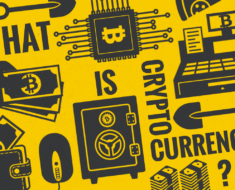It happens with every gold rush. During the San Francisco Gold Rush of the 1840s, for instance, many unscrupulous people attempted to cash in on those looking to become rich. During the birth of the internet age, people like David Kim Stanley—a convicted felon—preyed upon those who maybe didn’t have that much technological savvy. And now, during the cryptocurrency craze of the late 2010s, perhaps it shouldn’t come as a surprise that there are fraudsters attempting to take advantage of those trying to cash in and make a quick buck. And in the world of crypto, some of these scammers are surprisingly sophisticated in their tactics.
Indeed, it can be difficult for the novice crypto enthusiast—or even an experienced trader at times—to see the difference between a token with potential and something that is completely inconsequential. Although the statistics are limited, we know that more than half of new cryptocurrency projects are destined to fail. Today’s scammers go out of their way to make their projects seem reputable, even going as far as to claim that their coins run off of a known entity like EOS.
These days, the only way to know whether or not a project is noteworthy is to spend time and perform due diligence. For instance, if the project is of substance, then there should be communities dedicated to it on popular crypto spaces like Telegram. A token called Contentos is a good example of a new project that is going places. Not only does it boast several Telegram groups dedicated to it, but its website is also easy and straightforward for visitors to understand. The purpose of the token is laid out in very clear, concise terms. Those who are interested in participating can even procure free tokens from airdrops. The founder of the project, Mick Tsai, can often be seen making the rounds at conventions and discussing Contentos as a whole. When people who are curious about crypto do their research properly, it can actually be easy to see which projects are serious. Although there may not be a wealth of information about a new project online, there should at least be some indicators that others are excited about investing. People should also be wary of solely monitoring traffic as a way to determine a token’s viability; some scammers will trade their coins at high volumes to mimic market excitement.
Dil Bole Oberoi





